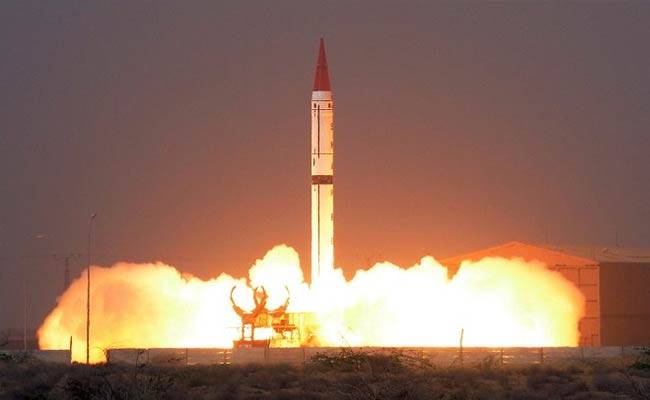The deterrence equation in South Asia is gradually changing amid the acquisition of advanced technologies and missile developments by India, most notably Ballistic Missile Defence (BMD) system. Similarly, India is heading into the continuous modernization of its military build-up, aspiring to become the giant arms trader of South Asian region. It outdoes China as the world’s largest importer of weapons systems, indicating the country’s intent of modernizing its military capabilities with an outreach beyond South Asia. It is feared that the whole Asian security is fueling arms trade now as the region has accounted for 46 percent of global imports over the past five years. As according to a report by the Stockholm International Peace Research Institute (SIPRI), six of the world's ten largest arms importers are in Asia and Oceania.
In the field of missiles, India and Russia have agreed to extend the range of their missiles e.g. BrahMos supersonic cruise missiles beyond the current 300 km. The land-attack version of BrahMos supersonic cruise missile with an extended range increased from 290 km to 450 km was successfully test fired. It is evident that India and Russia have extended the range keeping Pakistan in mind because BrahMos with 300 km range was still unable to target inside Pakistan but after enhancing the range the missile can hit anywhere inside Pakistan. So it carries serious regional implications in this regard. It would be worrisome not only for Pakistan but for China too. An Indian military official stated at some point of discussion, that “our threat perceptions and security concerns are our own, and how we address these by deploying assets on our territory should be no one else's concern.” The statement depicts the aggressive and offensive mode of Indian mindset. So, a greater range for BrahMos would imply that India’s power to strike would get an unprecedented fillip.
Unfavorably, these developments are compelling Pakistan to take necessary actions to maintain the strategic balance in the region. In addition to these state of the art weapons procurements; India is also in a process of introducing changes to its nuclear doctrine and may adopt pre-emptive nuclear posture. This posture would be an extremely destabilizing action which would fundamentally alter the deterrence equation and strategic stability in South Asia.
Indian pre-emptive doctrine would be a serious threat for the regional peace as it may pressurize Pakistan to consider pushing the nuclear button even before India exercises the pre-emptive nuclear option in a crisis like situation. The No First Use (NFU) actually refers to a pledge or a policy by a nuclear power not to use nuclear weapons as a means of warfare unless first attacked by an adversary using nuclear weapons. It clearly depicts the preemptive mindset of Indian conscientious nuclear weapons managers/ regulators. Evidently when it comes to India and Pakistan, each and every bit of such intentional or unintentional rhetoric plays a major role in shaping the future relevant moves.
Consequently the nuclear exchange in South Asia could become more plausible and believable right at the onset of a crisis or a terrorist attack which can escalate the situation between India and Pakistan. Pakistan and India would have to seriously get engaged in a dialogue process to prevent a bolt from the blue nuclear exchange as just a direct communication line between General Headquarters of Pakistan and India would prove inadequate in resolving a serious crisis in South Asia.
However, looking at the current Indian hardliner government, there is a little hope for optimism that India may consider the options to meaningfully resolve the existing issues which perpetuates instability. It thus becomes imperative for the international community, especially the global powers, to facilitate a dialogue process between New Delhi and Islamabad and to mediate on the unresolved disputes which pose an existential threat to one third of the world population. Regional forums like South Asian Association for Regional Cooperation (SAARC), and Brazil, Russia, India, China and South Africa (BRICS) can play an important role in facilitating conflict resolution between India and Pakistan.






